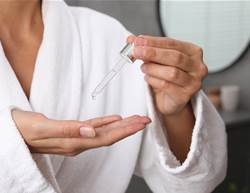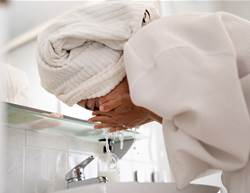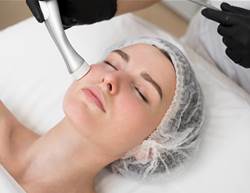You did all the right things. You applied (and reapplied) your sunscreen. You wore a hat. You sat under a tree when it got too hot. Alas, you still got sunburnt after a nice day at the beach.
But how, you may ask? Maybe you didn’t realise you missed a spot, your tube of sunscreen was expired, or your hat didn’t protect you as well as you thought it would. Despite your best efforts, you’ve wound up with a lobster-red sunburn — and boy, is it painful and itchy.
At this point, there’s nothing you can do to reverse the long-term damage those harmful UV rays have left on your skin. Still, dermatologists say there are steps you can take to soothe your sunburn and get relief in the moment.
While prevention is key, try these sunburn home remedies to feel better fast.
Draw a sunburn-soothing bath
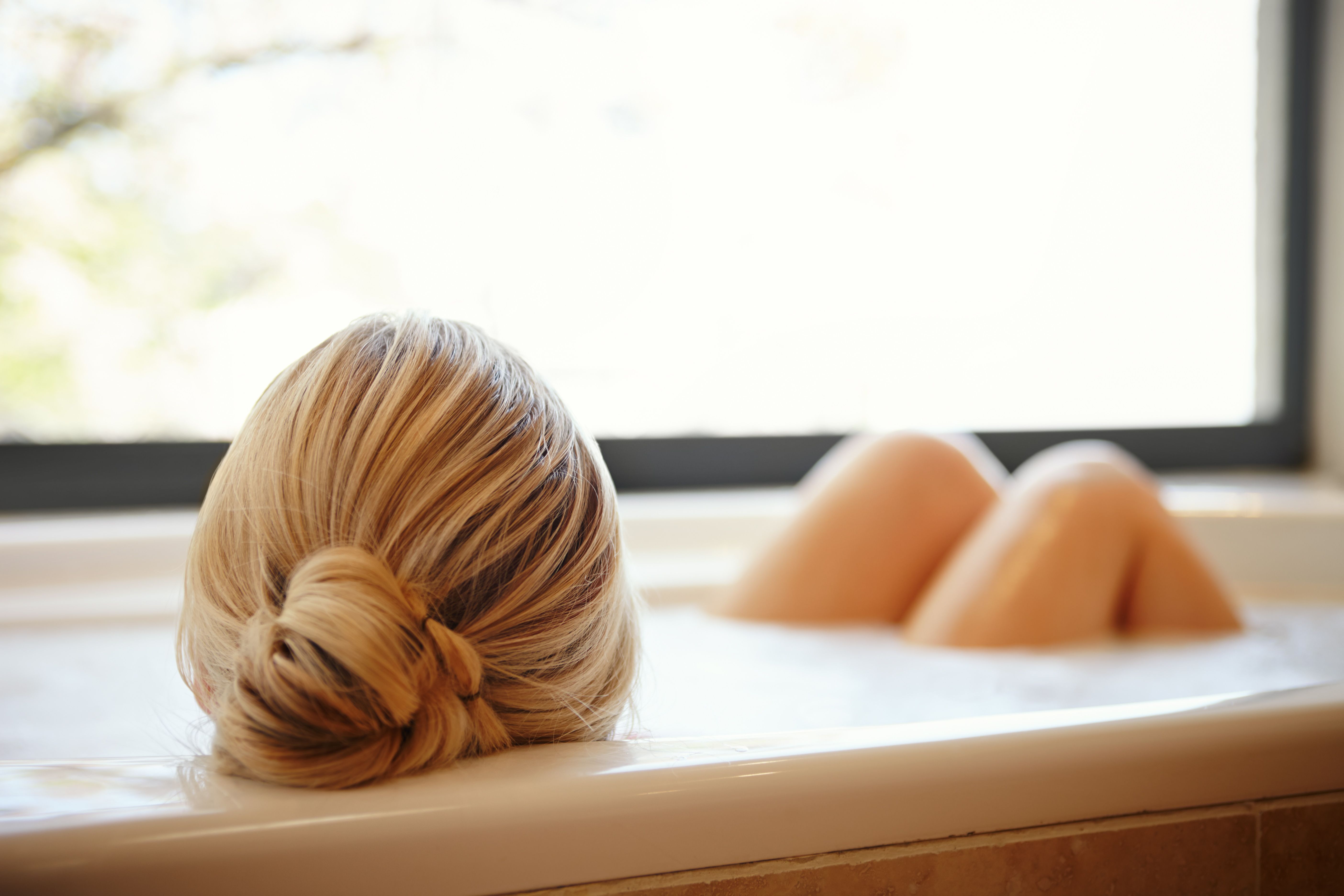
Skip the soap
After a long day in the sun, the first thing you probably want to do is rinse off-but you should think twice before sudsing up. Soaking in a bubble bath and using soap can dry and irritate sunburnt skin. A cool bath (sans bubbles) is a better option.
If you must use soap while you wash, reach for something mild and carefully rinse it all off-leftover soap residue can be extremely drying, which will only make your sunburn feel worse.
Mix in baking soda
For added relief, mix baking soda into your bath water, which has been shown to help relieve inflammation and itching, says dermatologist Dr Frederic Haberman. It works best when it dries on the skin, so plan to air-dry instead of towelling off.
Add a splash of vinegar
Apple cider and white vinegar are other sunburn soothers you probably have in your kitchen. Vinegar is a great astringent (thanks to its antiseptic properties) and helps relieve sunburn pain, says dermatologist Dr Carl Korn. Simply mix 1 cup of your preferred vinegar in with your cool bath water to spur your skin’s natural healing process, he suggests.
Calm inflamed skin
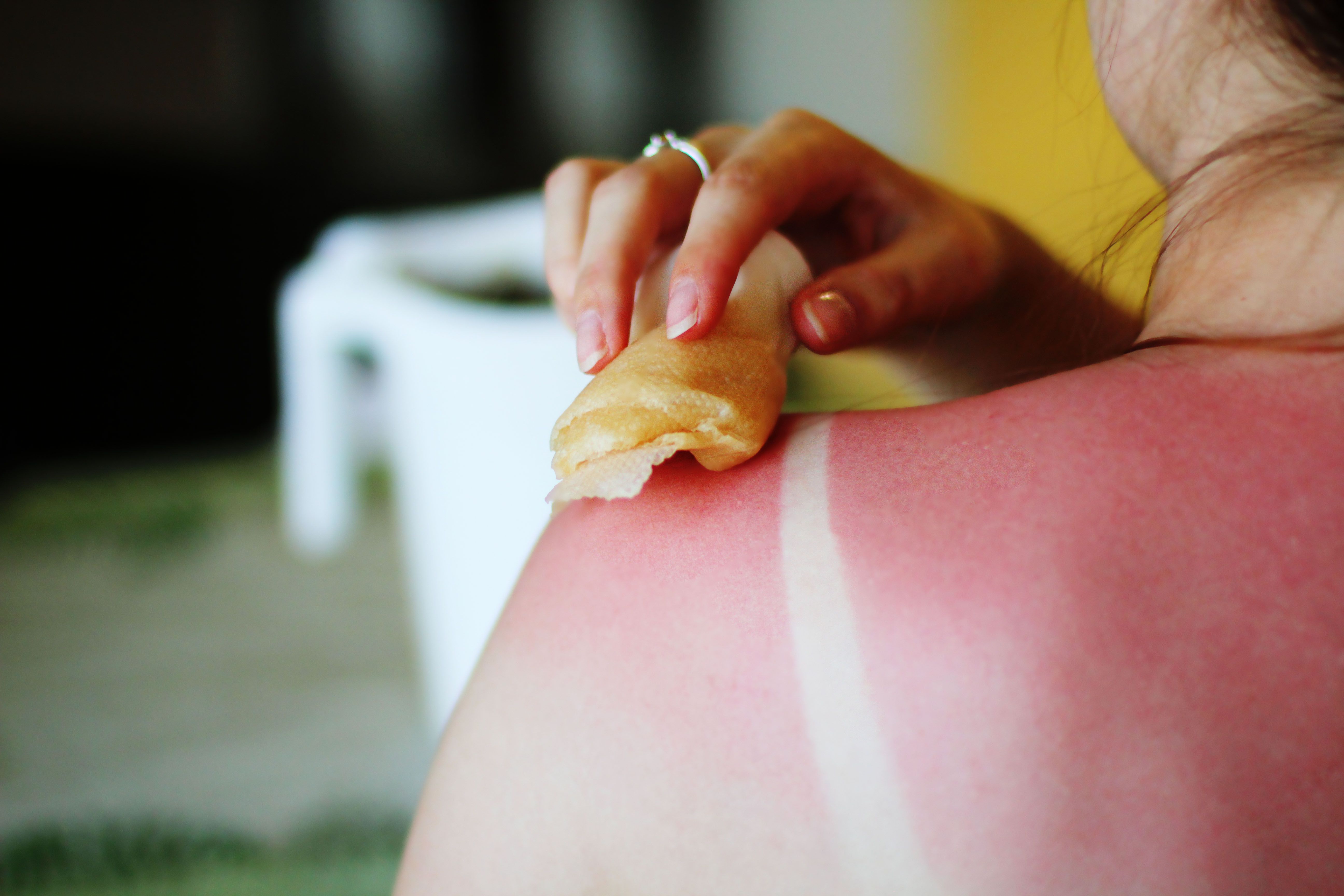
Reach for ice
Follow your urge to reach for something cold, but make sure to do it right. Wrap an ice pack in a damp cloth and hold it over the burn. This will absorb some of the heat from your skin, constrict blood vessels, and reduce swelling.
Ice-cold water is also an option. Pour water and ice into a bowl, soak a cloth in the liquid, and place it over the burn. Repeat this process every few minutes as the cloth warms. Apply the compress several times a day for 10 to 15 minutes, Dr Schreiber says.
...or frozen veggies
Improvise, if necessary, says Dr Haberman. “You could even take a bag of frozen peas, for instance, and use that. But make sure to wrap it first so that you’re not placing the icy package directly against your skin.”
Tame it with tea
The tannic acid in green and black tea may help pull heat form a sunburn, while catechins (an antioxidant compound) repair skin damage, research shows. This can be particularly helpful if you’re burned around your sensitive eye area. Simply soak two tea bags in cool water and place them on top of closed eyes to decrease swelling and help relieve pain.
Stop the itch

Opt for witch hazel
Witch hazel can also ward off uncomfortable, itchy skin and has been shown to have long-lasting anti-inflammatory relief, says Dr Haberman. To soothe larger areas, moisten a cloth with the astringent and place it over your sunburnt areas. For smaller areas, dip cotton balls into the liquid and gently blot on.
Use hydrocortisone
Minimise itching, soothe skin irritation, and reduce inflammation with a topical lotion, spray, or ointment containing 1% hydrocortisone, such as Dermaid or Hydrozone. Hydrocortisone has anti-inflammatory properties, which means it will reduce redness and ease the pain of mild sunburns, says dermatologist Dr Coyle Connolly. “Use 2 or 3 times a day.”
Hydrate (and heal) dry skin
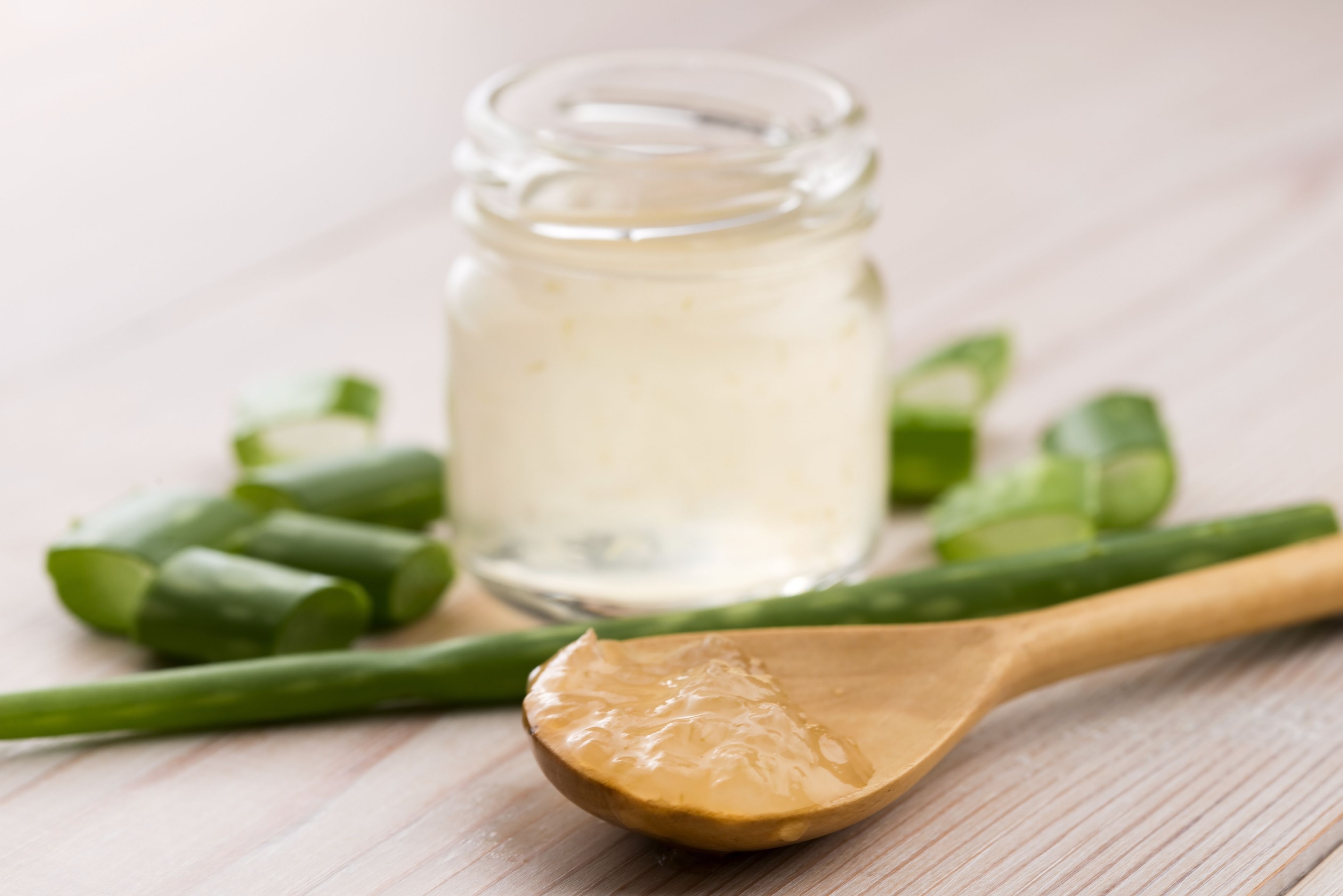
Moisturise strategically
After you’ve rinsed off, smooth on a natural bath oil. Let it soak in for a minute, and then apply a moisturisng cream or lotion to lock in moisture. This is an important step, says dermatologist Dr Rodney Basler or you may find that your skin feels drier than before. For added relief, chill your moisturiser in the fridge before applying.
Slather on aloe vera
“We’re starting to see evidence in medical literature that aloe vera may really help wound healing,” says Dr Basler. If you have an aloe plant, simply break off a leaf and apply the juice. Pure, organic aloe vera gel is the next best thing-especially if you chill it. Look for one that does not contain alcohol, colours, and fragrance that could further irritate the skin.
Load up on water
You need to drink plenty of water to help counteract the drying effects of a sunburn, says Gossel. But if you can’t guzzle fast enough, snack on hydrating fruits and vegetables, like watermelon, cucumber, strawberries, tomatoes, grapefruit, and rockmelon — all of which are more than 90 percent water.
Minimise pain and irritation
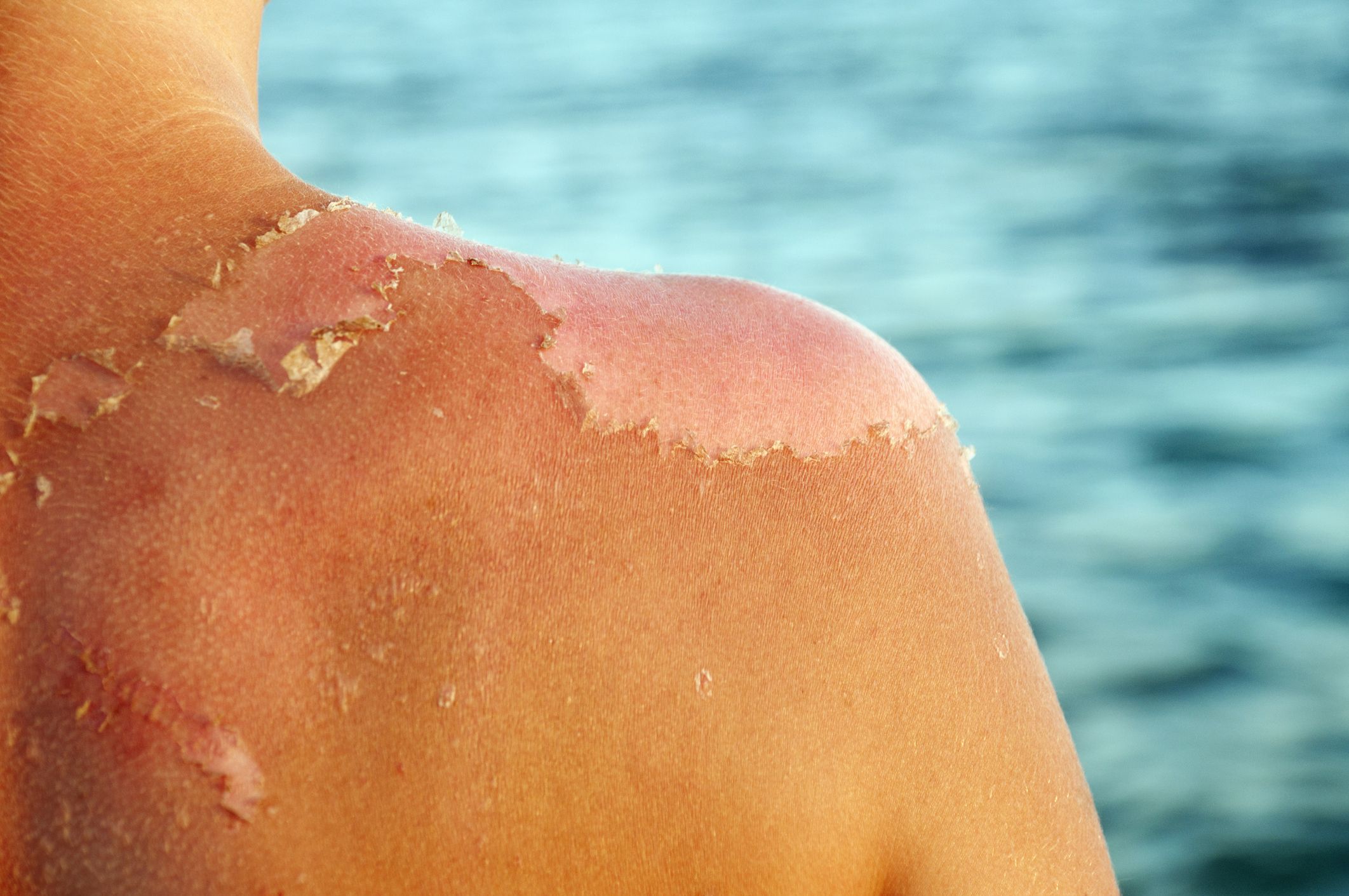
Blow up your air mattress
Sleeping with a nasty sunburn can be challenging, but you need to rest for your body to recover. Try sprinkling talcum powder on your sheets to minimise chafing and friction, Dr Haberman suggests. An air mattress might also help you sleep more easily since it retains less heat. Pro tip: If your legs or feet are burned, elevate your legs above heart level to help reduce swelling, Dr Basler says.
Resist the urge to peel
Blisters are a sign of severe damage, and they must be treated with care. If they bother you and they cover only a small area, you may carefully drain them, Dr Basler says. However, do not peel the top skin off; you’ll have less discomfort and danger of infection if air does not come in contact with sensitive nerve endings.
To drain the fluid, first, sterilise a needle by holding it over a flame. Then puncture the edge of the blister and press gently on the top to let the fluid come out. Do this three times in the first 24 hours, and then leave the blisters alone, says Dr Basler.
How to prevent sunburn
Don’t make the same mistake twice. After you’ve gotten burned, it takes 3 to 6 months for your skin to return to normal, Dr Schreiber says. “When you get a sunburn, and the top layer of skin peels off, the newly exposed skin is more sensitive than ever. That means you’ll burn even faster than you did before if you’re not careful.”
Be aware of your sun exposure and protect yourself with a sunscreen that contains SPF50. Look for one that contains zinc oxide, titanium dioxide, or avobenzone, which block both ultraviolet A and B rays, says dermatologist Dr Norman Levine.
Apply sunscreen liberally about 30 minutes before heading outside, even when it’s overcast, and don’t forget to protect your lips, hands, ears, and the back of your neck. Reapply every two hours. Wearing protective clothing like hats, lightweight long-sleeved tees, and cover-ups can also help to keep your skin protected.
When should you call a doctor for sunburn relief?
Some burns are simply too severe to be treated at home, says Dr Basler. Consult a doctor if you experience nausea, chills, fever, faintness, extensive blistering, general weakness, patches of purple discolouration, or intense itching. Be aware that if the burn seems to be spreading, you could have an infection compounding the problem.
You should also contact your doctor if you’re taking prescription medications. Certain drugs, like antibiotics and antifungal medications can increase your sensitivity to the sun and cause reactions, says Dr Basler. Oral contraceptives, diuretics, drugs for diabetes, and even PABA-containing sunscreens may also increase your risk of sunburn.






